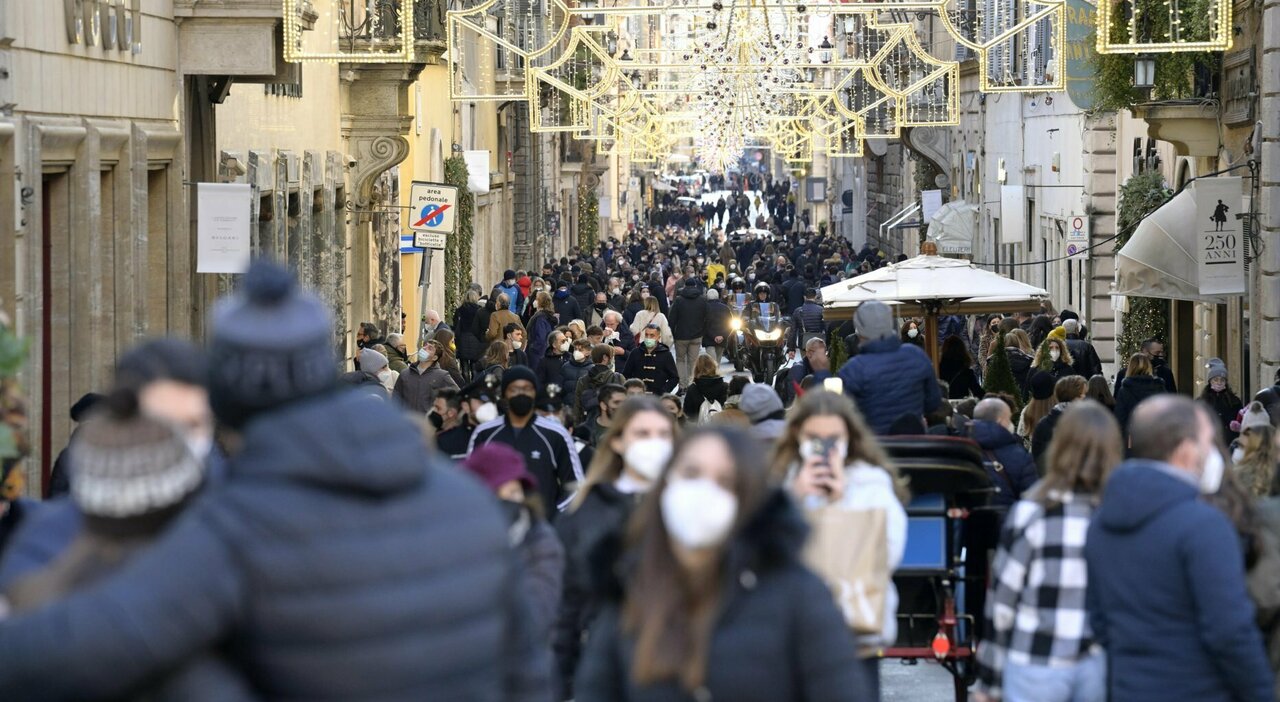The mad rush of the virus continues Sars-CoV-2. The infections multiply. Yesterday we reached 197,552, while there were 184 deaths against 223 the day before. The pressure on the health system is also increasing. The latest bulletin of the Ministry of Health recorded a total of 1,557 patients in intensive care, 58 more in 24 hours in the balance between entries and exits. The hospitalized with symptoms in the ordinary wards are 14,930, or 339 more than the previous day. We have been exponentially for several weeks now.
Vaccination obligation for over 50s extended to third dose or booster. The decree takes effect: first administrations tripled
I study
From a data processing carried out by Ceds Digital for Il Messaggero, from 3 December to 3 January the cases of Covid-19 almost tripled. The age group with the greatest increase of cases is that between 10 and 50 years of age, while the cases in the over 80s, the segment of the population with the highest vaccination rate, increased three times less than the average. According to the latest national update on the epidemic in Italy of the Istituto Superiore di Sanità (Iss), we are witnessing for the eleventh consecutive week a “rapid and generalized increase”. In one month there was an increase in the weekly incidence in all age groups, which reached “values exceeding 500 cases per 100,000 inhabitants” in the last seven days. And the numbers look set to increase dramatically. According to physicist Giorgio Sestili, founder of the Facebook page “Coronavirus – Scientific data and analysis”, next week we could get to record about 400 thousand cases a day. With these numbers “it will be impossible to trace them,” says the physicist. “Consequently, the only photograph of the epidemic will be based on hospitalizations,” he adds. In fact, in order to register such a number of cases, about two million tests would be necessary and according to the physicist it is therefore likely that “the numbers will be underestimated: we will not know how many cases there will be”. In light of this situation, no one is currently able to calculate when the peak will arrive.
Forecasts
“If it arrives in the next week, it will probably be because the infections and people in isolation will be so numerous that the curve will start to go down, as happened in South Africa,” says Sestili. The virus, while affecting the vaccinated and the cured more slightly, spares no one. Not surprisingly, according to the ISS update, cases of reinfection. In the last week we have gone from 2% to 3.1% of the total number of cases. “From 24 August 2021 to 5 January 2022, 36,082 cases of reinfection were reported, equal to 2% of the total number of notified cases”, reads the report, updated on 5 January. The document also states that “the probability of contracting a reinfection is higher in unvaccinated than in vaccinated with at least one dose and in health workers, compared to the rest of the population”.
ICU admissions for Covid-19 are 25.6 times more numerous in unvaccinated than in those who have had three doses of the vaccine. The admission rate in intensive care is equal to 23.1 per 100,000 inhabitants for the unvaccinated, 1.5 per 100,000 for those vaccinated for over 120 days, 1 per 100,000 for vaccinated for less than 120 days and 0.9 per 100,000 for those vaccinated with the booster dose. In fact, despite this increase in cases, Ceds Digital analysis indicates that, due to both vaccines and more tampons, asymptomatic and mild cases increased by 197% versus a 73% increase in severe cases. and critics. According to the same elaboration, the increase in severe and critical cases increases in the age groups less protected by the vaccine. In fact, in the over 80s the serious cases increased by half compared to the under 50s. In general, the analysis by Ceds Digital indicates that as of January 3, 98.4% of the positives were symptomatic or at most showed mild symptoms. Only 1.6% of the positives were in severe or critical condition and, of these, 80% were over 50 years of age.
© breaking latest news
.
